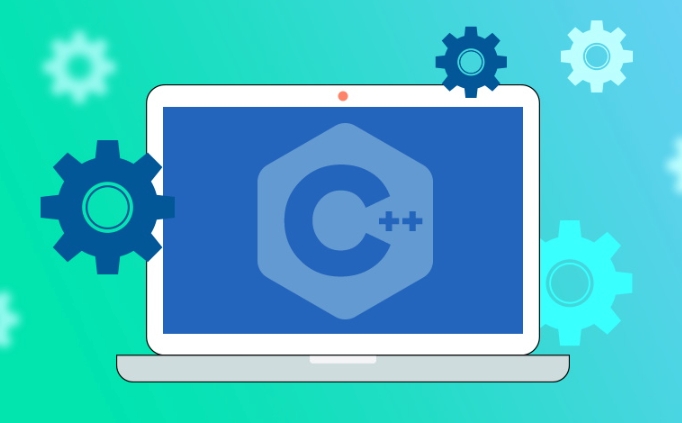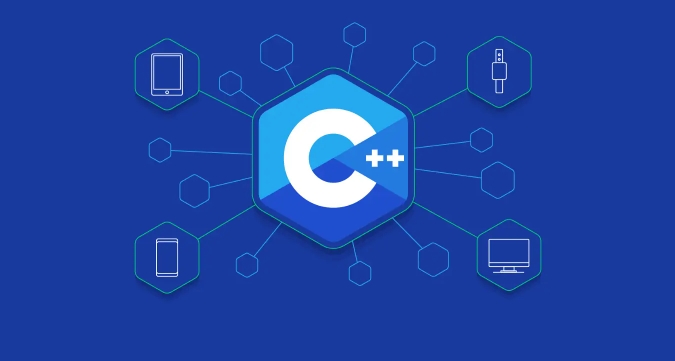In C, a class is a user-defined data type, a method to encapsulate and manipulate data, and an object is a specific instance of the class. 1. The class keyword is used to define the class, including member variables and member functions, and control visibility through access modifiers; 2. The object can be directly declared, defined or initialized by the array; 3. The constructor is used to initialize the object, without a return type, and can be overloaded; 4. Encapsulate the data protected through private, provide public method access and add verification logic. Mastering classes and objects is the basis for understanding OOP characteristics such as inheritance and polymorphism.

In C, classes and objects are the core concepts of object-oriented programming (OOP). Simply put, a class is like a blueprint, and an object is a concrete instance created based on this blueprint. If you are just starting to get involved in OOP, understanding the relationship between the two can help you write code that has clearer structure and easier maintenance.

What is a class? How to define a class?
A class is a user-defined data type that encapsulates data (variables) and functions (methods) that operate this data.

The basic syntax is as follows:
class class name {
// Member access permissions: public, private, protected
public:
// Member variable or member function};For example, let's define a class that represents "human information":

class Person {
public:
string name;
int age;
void introduce() {
cout << "Hi, I'm " << name << " and I'm " << age << " years old." << endl;
}
}; Here name and age are attributes of the class, introduce() is its behavior.
A few points to note:
- By default, members in the class are private, so you need to use
public:to explicitly declare which ones are accessible externally. - Class definitions usually end with semicolons.
How to create and use objects?
With classes, you can create objects like using built-in types.
Person person1; person1.name = "Alice"; person1.age = 30; person1.introduce(); // Output: Hi, I'm Alice and I'm 30 years old.
You can also define multiple objects at once:
Person person1, person2;
Or initialize the object array outside the class:
Person people[2]; people[0].name = "John"; people[0].age = 25;
It should be noted that if the members in the class are private, they cannot be accessed directly like the one above and must be operated indirectly through public methods (getter/setter).
Constructor: Let the object have initial value as soon as it is born
The constructor is automatically called every time an object is created. We can define the constructor ourselves to set the initial value.
class Person {
public:
string name;
int age;
// Constructor Person(string n, int a) {
name = n;
age = a;
}
void introduce() {
cout << "Hi, I'm " << name << " and I'm " << age << " years old." << endl;
}
};Then create the object like this:
Person person2("Bob", 28);
person2.introduce(); // Output: Hi, I'm Bob and I'm 28 years old.Some details:
- The constructor has no return type (including void)
- There can be multiple constructors (overloaded)
- If not written, the compiler will generate a default constructor (no parameters)
Encapsulation and access modifier: Protect your data
C provides three types of access controls:
-
public: externally accessible -
private: Only accessible inside the class -
protected: The derived class can be accessed (the inheritance section will be discussed later)
Usually we will set the data to private and provide public methods to access them:
class Person {
private:
string name;
int age;
public:
void setName(string n) { name = n; }
void setAge(int a) { age = a; }
void introduce() {
cout << "Hi, I'm " << name << " and I'm " << age << " years old." << endl;
}
};The advantage of this is that you can add verification logic when setting values ??to prevent illegal data.
Basically that's it. Classes and objects are a very basic but also very powerful part of C programming. Only by mastering them well can we better understand and use advanced features such as inheritance and polymorphism.
The above is the detailed content of C tutorial on classes and objects. For more information, please follow other related articles on the PHP Chinese website!

Hot AI Tools

Undress AI Tool
Undress images for free

Undresser.AI Undress
AI-powered app for creating realistic nude photos

AI Clothes Remover
Online AI tool for removing clothes from photos.

Clothoff.io
AI clothes remover

Video Face Swap
Swap faces in any video effortlessly with our completely free AI face swap tool!

Hot Article

Hot Tools

Notepad++7.3.1
Easy-to-use and free code editor

SublimeText3 Chinese version
Chinese version, very easy to use

Zend Studio 13.0.1
Powerful PHP integrated development environment

Dreamweaver CS6
Visual web development tools

SublimeText3 Mac version
God-level code editing software (SublimeText3)

Hot Topics
 C Polymorphism : is function overloading a kind of polymorphism?
Jun 20, 2025 am 12:05 AM
C Polymorphism : is function overloading a kind of polymorphism?
Jun 20, 2025 am 12:05 AM
Yes, function overloading is a polymorphic form in C, specifically compile-time polymorphism. 1. Function overload allows multiple functions with the same name but different parameter lists. 2. The compiler decides which function to call at compile time based on the provided parameters. 3. Unlike runtime polymorphism, function overloading has no extra overhead at runtime, and is simple to implement but less flexible.
 What Are the Different Kinds of Polymorphism in C ? Explained
Jun 20, 2025 am 12:08 AM
What Are the Different Kinds of Polymorphism in C ? Explained
Jun 20, 2025 am 12:08 AM
C has two main polymorphic types: compile-time polymorphism and run-time polymorphism. 1. Compilation-time polymorphism is implemented through function overloading and templates, providing high efficiency but may lead to code bloating. 2. Runtime polymorphism is implemented through virtual functions and inheritance, providing flexibility but performance overhead.
 C : Is Polymorphism really useful?
Jun 20, 2025 am 12:01 AM
C : Is Polymorphism really useful?
Jun 20, 2025 am 12:01 AM
Yes, polymorphisms in C are very useful. 1) It provides flexibility to allow easy addition of new types; 2) promotes code reuse and reduces duplication; 3) simplifies maintenance, making the code easier to expand and adapt to changes. Despite performance and memory management challenges, its advantages are particularly significant in complex systems.
 C Destructors: Common Errors
Jun 20, 2025 am 12:12 AM
C Destructors: Common Errors
Jun 20, 2025 am 12:12 AM
C destructorscanleadtoseveralcommonerrors.Toavoidthem:1)Preventdoubledeletionbysettingpointerstonullptrorusingsmartpointers.2)Handleexceptionsindestructorsbycatchingandloggingthem.3)Usevirtualdestructorsinbaseclassesforproperpolymorphicdestruction.4
 Polymorphism in C : A Comprehensive Guide with Examples
Jun 21, 2025 am 12:11 AM
Polymorphism in C : A Comprehensive Guide with Examples
Jun 21, 2025 am 12:11 AM
Polymorphisms in C are divided into runtime polymorphisms and compile-time polymorphisms. 1. Runtime polymorphism is implemented through virtual functions, allowing the correct method to be called dynamically at runtime. 2. Compilation-time polymorphism is implemented through function overloading and templates, providing higher performance and flexibility.
 C tutorial for people who know Python
Jul 01, 2025 am 01:11 AM
C tutorial for people who know Python
Jul 01, 2025 am 01:11 AM
People who study Python transfer to C The most direct confusion is: Why can't you write like Python? Because C, although the syntax is more complex, provides underlying control capabilities and performance advantages. 1. In terms of syntax structure, C uses curly braces {} instead of indentation to organize code blocks, and variable types must be explicitly declared; 2. In terms of type system and memory management, C does not have an automatic garbage collection mechanism, and needs to manually manage memory and pay attention to releasing resources. RAII technology can assist resource management; 3. In functions and class definitions, C needs to explicitly access modifiers, constructors and destructors, and supports advanced functions such as operator overloading; 4. In terms of standard libraries, STL provides powerful containers and algorithms, but needs to adapt to generic programming ideas; 5
 What Are the Various Forms of Polymorphism in C ?
Jun 20, 2025 am 12:21 AM
What Are the Various Forms of Polymorphism in C ?
Jun 20, 2025 am 12:21 AM
C polymorphismincludescompile-time,runtime,andtemplatepolymorphism.1)Compile-timepolymorphismusesfunctionandoperatoroverloadingforefficiency.2)Runtimepolymorphismemploysvirtualfunctionsforflexibility.3)Templatepolymorphismenablesgenericprogrammingfo
 C Polymorphism: Coding Style
Jun 19, 2025 am 12:25 AM
C Polymorphism: Coding Style
Jun 19, 2025 am 12:25 AM
C polymorphismisuniqueduetoitscombinationofcompile-timeandruntimepolymorphism,allowingforbothefficiencyandflexibility.Toharnessitspowerstylishly:1)Usesmartpointerslikestd::unique_ptrformemorymanagement,2)Ensurebaseclasseshavevirtualdestructors,3)Emp






